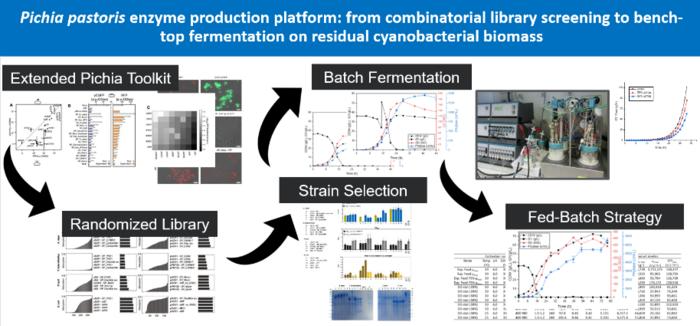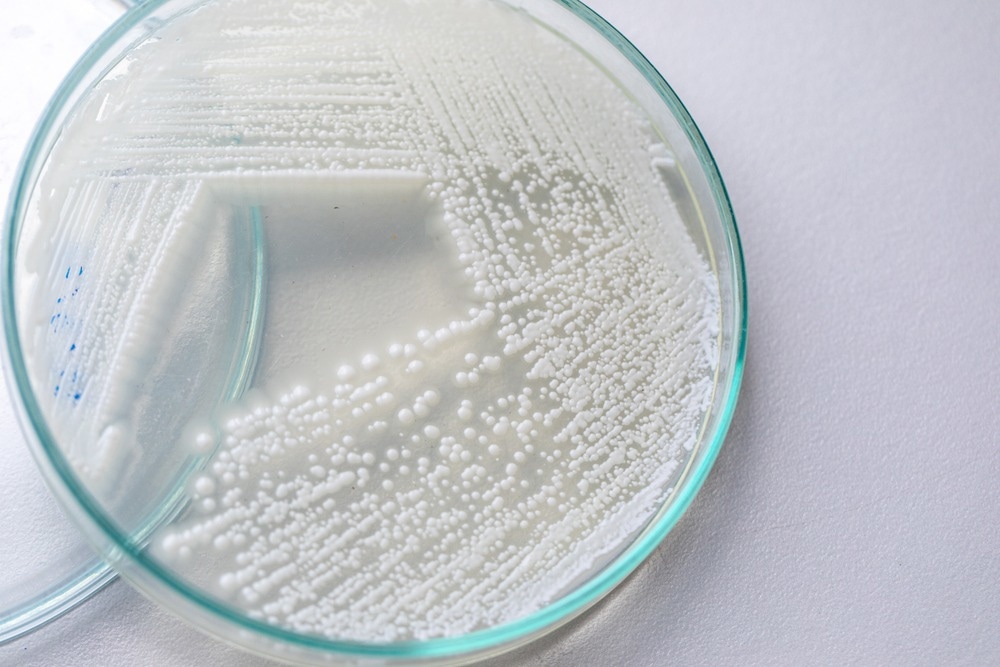Reviewed by Danielle Ellis, B.Sc.Jan 2 2024
The increasing need to switch to more environmentally friendly industrial processes is driving up demand for industrial enzymes. This research presents a new strategy for producing enzymes by using the P. pastoris platform’s cyanobacterial biomass, which has not yet been fully used.
 Researchers successfully utilize cyanobacterial biomass as a novel feedstock in a cutting-edge P. pastoris platform. The extended toolkit exhibits promising results for offering a sustainable alternative for enzyme expression. Image Credit: Dr Doris Schieder, Chair of Chemistry of Biogenic Resources, Technical University of Munich, Campus Straubing for Biotechnology and Sustainability, Germany
Researchers successfully utilize cyanobacterial biomass as a novel feedstock in a cutting-edge P. pastoris platform. The extended toolkit exhibits promising results for offering a sustainable alternative for enzyme expression. Image Credit: Dr Doris Schieder, Chair of Chemistry of Biogenic Resources, Technical University of Munich, Campus Straubing for Biotechnology and Sustainability, Germany
Our work reveals the potential of cyanobacterial biorefineries to support enzyme production.”
Doris Schieder, Group Leader and Chair, Chemistry of Biogenic Resources, Technical University of Munich
This resulted from a comprehensive multidisciplinary approach. The team improved the efficiency of P. pastoris engineering by characterizing and growing a combinatorial library. Thorough screening of these libraries produced strong strains that produced enzymes, which made it possible to create an effective fed-batch method for AppA E. coli phytase production.

Image Credit: Rattiya Thongdumhyu/Shutterstock.com
The effective use of Nostoc sp. De1 biomass hydrolysate as a fermentation substrate, which offers a practical and sustainable substitute for traditional feedstock, is a crucial component.
Our findings demonstrate that the extended P. pastoris toolkit not only generates high-performing producer strains but also offers a greener pathway for enzyme expression, addressing the critical need for sustainable biobased production.”
Korbinian Sinzinger, Research Assistant and Doctoral Candidate, Technical University of Munich
Source:
Journal reference:
Sinzinger, K., et al. (2023). The Pichia pastoris Enzyme Production Platform: from Combinatorial Library Screening to Bench-Top Fermentation on Residual Cyanobacterial Biomass. Journal of Bioresource and Byproducts. doi.org/10.1016/j.jobab.2023.12.005